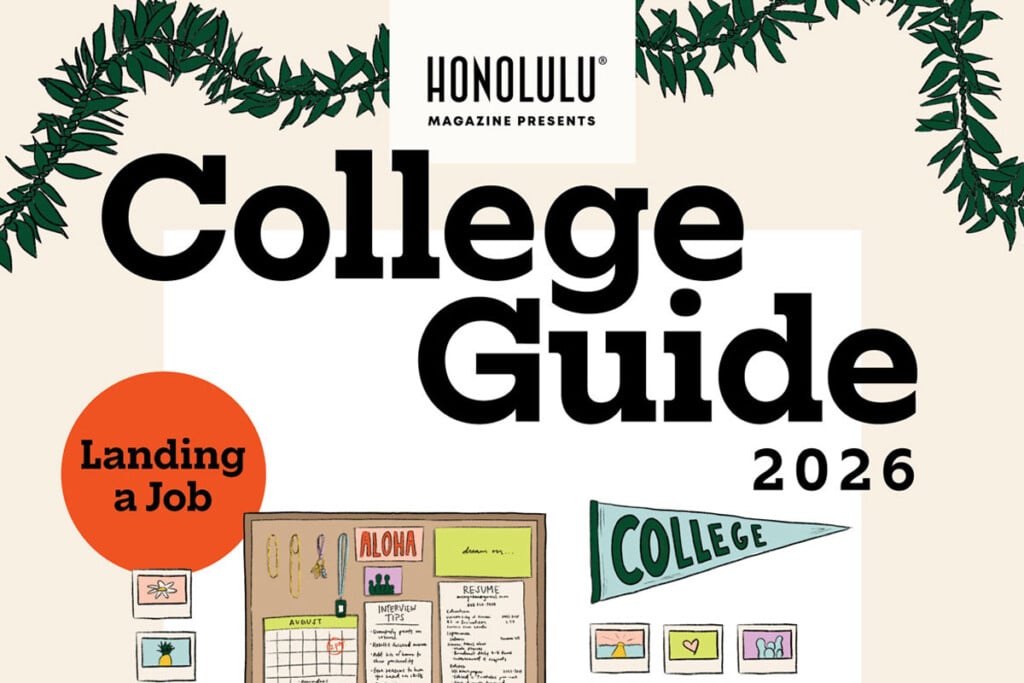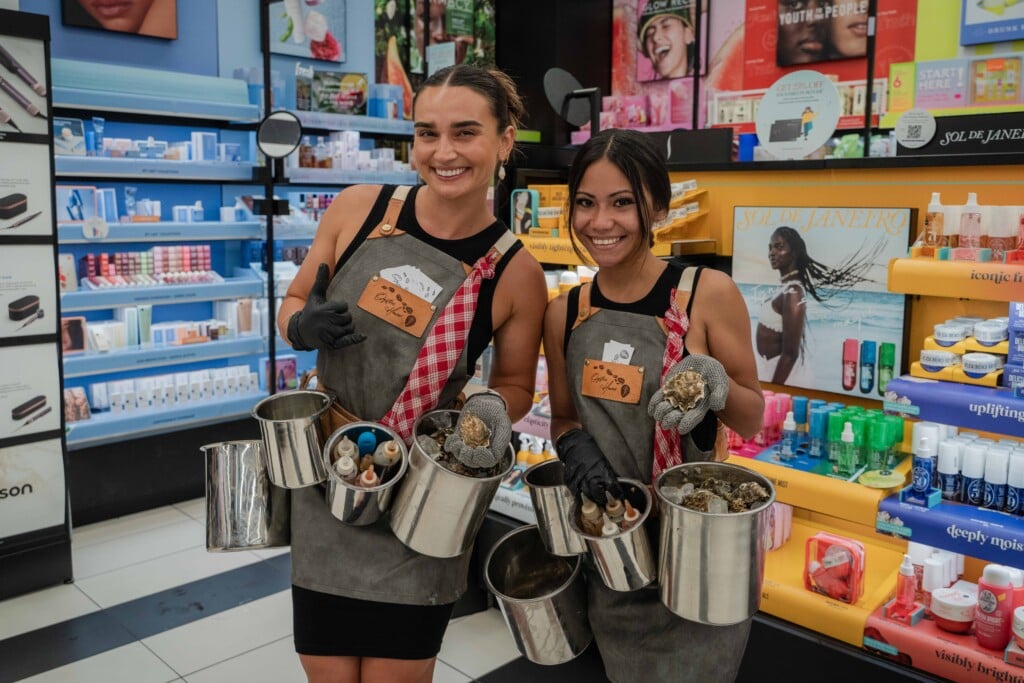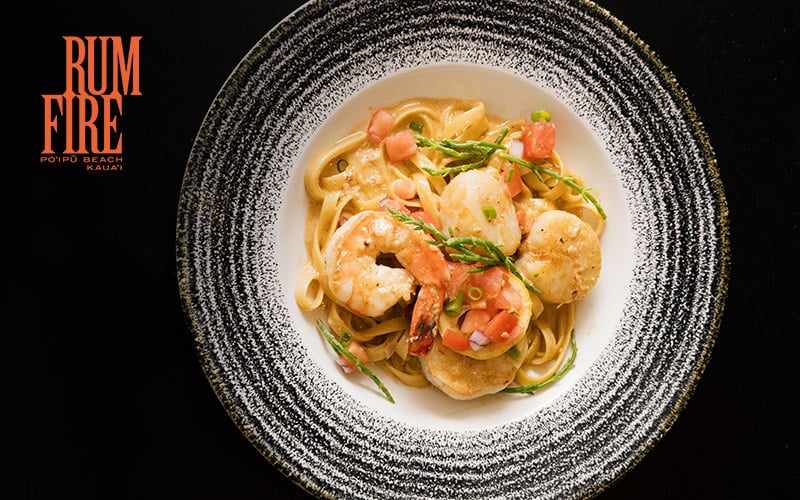2024 Hawai‘i College Guide: Getting Into College
Having an informed, personalized strategy is critical for college admission, especially since the pandemic.

Strategies for college admission have significantly shifted since COVID-19 rocked the world. While schools still seek out students with stellar academic credentials and glowing teacher recommendations, the pandemic pushed institutions across the country to scrap standardized testing requirements, roll out virtual campus tours and more. As policies have changed—and new ones stuck around even as much of life has gone back to normal—so have tactics for gaining admittance. We spoke with a local college counselor and one who works with students nationwide about the shifting landscape, seeking their insights and advice for today’s college-bound students and their families.
Read more of the 2024 Hawai‘i College Guide
SATs No Longer Required
The biggest change in college admissions has been the rise of test-optional policies, which were once deemed mandatory. Though a few colleges and universities have restored testing requirements, submitting SAT, ACT and other standardized test scores remains optional at more than 1,900 schools, including many of the country’s most prestigious universities, says Todd Fleming, director of college counseling at ‘Iolani School.
To be clear, it wasn’t the pandemic that instigated the change—it just sped up the timeline. Schools for years had been considering deemphasizing standardized testing, acknowledging its limitations in evaluating students and the inequity of some students being able to afford test prep courses while others could not.
Thus, when COVID-19 struck, and SATs and ACTs were canceled, colleges swiftly announced that students were no longer required to submit standardized test scores. The ability to opt out led to record numbers of applications at many selective schools—and lower acceptance rates. Suddenly, students who didn’t have test scores that met school averages were emboldened to apply.
Although some institutions, including the Massachusetts Institute of Technology, have announced that applicants once again will be required to submit SAT/ACT scores, many have gone the opposite route. None of the nine University of California campuses, for instance, will consider SAT and ACT scores in admissions or scholarship decisions. Other schools are following suit.
In deciding whether to submit standardized test scores to places where they are optional, students should evaluate their individual situations, counselors say.
“If a student has access to take a test, then they should do so. And if they do well, they should submit their scores because it’s another metric, another measure of their academic preparation for college,” says Connie Livingston, a former admissions officer at Brown University who now serves as the head of counselors at the California-based college consultancy Empowerly. “As a former admissions officer, in some instances, I did value being able to see those test results, particularly for STEM fields. If I saw high math scores and the student was applying to an engineering program, for example, that was valuable and confirmed their preparedness.”
Fleming agrees, saying ‘Iolani’s counselors still strongly encourage students to prepare for and to take standardized tests. “The benefit of test-optional policies can also present a challenge, as students have to decide whether or not to submit their scores,” he says. “They can ask themselves, ‘Do these scores represent me well? Do they add strength to my application? Or is my application stronger without them?’ Choosing whether or not to send scores becomes another individualized variable in the process.”
More Financial Considerations
Along with changing admission requirements, students and their families have been wrestling with more financial considerations as college costs rise and economic uncertainties grow.
“I think students and families are now considering more variables than they have in the past,” Fleming says. “They might be looking more now at not just what they’re going to be asked to pay, but how much they would be comfortable paying. It’s always been a huge issue for most families in the United States, but discussions of paying for college are probably more common than they used to be.”
Fleming says another change he’s noticed is that selective schools—but perhaps not the most selective ones—are less predictable in terms of how they distribute merit aid. “We’re seeing merit packages that we wouldn’t have necessarily expected in the past,” he says. “It’s a college’s acknowledgment that this is a great student. We’d love to have them on our campus, and we’re willing to have this family at a lower price point to do that.”
More Students Are Applying Early
Another trend in college admissions, although not necessarily driven by the pandemic, is that more students are taking advantage of early decision and early action programs because acceptance rates are often higher, Livingston says.
There’s an important distinction to make, however, between early decision and early action. While early decision is a binding agreement—you must attend if you’re admitted—students applying through early action can choose other schools.
“You should only apply early decision if you know beyond a shadow of a doubt that this is your top choice school,” Livingston says. “I also caution students where finances could be an issue, because when you receive your early decision admission, you will likely receive your financial aid package, and 100% of your needs may not be met. Not all families are able to take that financial risk.”
Another thing to note for early applicants is that because of the early deadlines—typically in November—admissions officers likely will analyze them through their junior years instead of their senior years.
Rise of Virtual Campus Tours
During the height of the pandemic, with institutions veering to remote learning and campuses shutting down, college tours came to a halt. Schools across the nation began offering more virtual tours of their facilities and programs. “It’s a very positive thing that has come out of the pandemic that so many more schools have shored up their online resources for students,” Livingston says. “Before, you had the traditional in-person campus visit, which isn’t accessible for all students. Now, there are either live or recorded information sessions along with live Q&As and chats with current undergraduate students. Students can now go to college websites and take advantage of virtual online opportunities that can give them a thorough idea of what their life and educational experience would be like.”
For Hawai‘i students, the convenience of the virtual tour is clear.
“Not all of our families or students are able to travel and visit colleges,” Fleming says. “That’s a stark contrast to kids going to high school in the Northeast where they can hop in the car and visit five or 10 different selective colleges within a week. So when colleges were forced to offer more online, that allowed our students to avail themselves to additional resources that didn’t exist prior to the pandemic. There’s no replacement for actually being on campus, but it did help.”
Tip: If touring multiple colleges isn’t an option for you, try searching for the schools you want at youvisit.com—It’s free and has a database of more than 600 college tours for you to browse.
Tell Your Story
The normal flow of schooling changed for many students during the pandemic. Remote learning became the norm, grading systems shifted, and sports and other extracurricular activities were canceled or postponed. Admissions officers are fully aware of this and want students in their personal essays to indicate how they’ve been affected by the changes and how they’ve adjusted.
Fleming says the student essay has always been a critical component of a college application, but it’s clear now that a person’s story should not be solely defined by their activities. “A person’s story could encompass something from their own history, from their family, from something more than a rehashing of their activities list,” he says. “The pandemic perhaps forced students to see that they need to show colleges more of who they are and what makes them tick. The essay has always been the vehicle for that, and students now recognize that their essay isn’t just an activities listing, but a chance to reveal who they are.”
Don’t Focus on Rankings
Overall, Livingston advises college applicants and their families to not be consumed by rankings. Schools should be selected based on how good a fit they are for them. “What the rankings do is establish prestige, and students and families want to be associated with prestige,” she says. “It’s hard to change that mindset, but I try to explain to students that this is going to be your home for the next four years, your community. Dig deep into what a particular college community can offer you, and what you can offer them.”
There are more than 4,000 colleges in the United States, and the vast majority offer excellent educational and social extracurricular opportunities, she adds.
“It’s incredibly important for students to build a balanced college list,” she says. “You want to have some safety schools, target schools, reach schools, and maybe even a few of those high reaches, like the top 10 schools. But it’s important that every school on your list is one that you would be happy to attend, where you can see yourself thriving and excelling. Safety schools should not just be a place to go if you don’t get in anywhere else. You should be excited to attend them too.”
Fleming said his main advice to students is to think critically about what experiences they’re hoping to get from college, and to identify that in a way that’s not contingent on what others want or what they’ve heard but on what school will fit them best. “We ultimately want them to find a place where they will be challenged, but they’ll also be successful,” he says. “We want them to be comfortable, but not too comfortable. We want them to grow. It’s the next four years of their life that can create amazing opportunities for them for the rest of their life.”

Build a Life That Makes You Happy
Joni Zamora | Sophomore, UH Mānoa
With a new major and her old ZIP code back, Joni Zamora felt ready for her second first day of college. The 19-year-old sophomore recently returned home to O‘ahu and transferred to UH Mānoa after spending a year away at the University of La Verne in California.
Though she grew up in Kapolei, Zamora’s parents wanted her to have the best possible education even if it meant a longer commute, so Zamora went to public charter elementary and middle schools in town. For secondary education, her parents filed a geographic exemption so she and her two older sisters could attend Kaiser High School in Hawai‘i Kai, to utilize its Advanced Placement program in which students can earn college credits.
Zamora says she was eager to try a different state for her first year of college; until then, she had never left her family or Hawai‘i for more than two weeks. Zamora, who had a 4.0 GPA, was accepted to all eight schools that she applied to. She chose La Verne because it was the most affordable. And while she was mainly only paying for housing and food thanks to the scholarships, grants, loans and other financial aid she received, Zamora says she was still spending more than she would have liked. And La Verne wasn’t exactly the experience she was hoping for. “It was a pretty small school, and I don’t know if that was the best fit for me,” Zamora says. “My school was really highly ranked in diversity, but then I realized that diversity doesn’t mean the same thing everywhere. And so that was kind of an adjustment, being the minority in a different place.”
An inspiring elective course in architecture solidified what Zamora needed to do: transfer to UH where she could major in the field. Though she’s happy to be home, she hopes to travel more after she graduates.
Zamora says if she could go back in time and tell her high-school-self one thing, it would be to “not be afraid to take your time in the process, and make sure what you pursue is what makes you happy. … Whatever field you’re putting yourself in, it may be for a really long time, so I just think—shouldn’t happiness be as big a factor as any of the other things?”
—Alicia Lou

Fulfillment Equals Success
Amee Hi‘ilawe Neves | Senior, UH Mānoa
Amee Hi‘ilawe Neves says her family believes she “could move a mountain” if she tried hard enough, and with their support, she believes it, too.
The 20-year-old senior at UH Mānoa was born and raised in Wai‘anae. After she completes her undergrad degree in journalism, she plans to pursue a master’s degree in education. Then she’ll return to her alma mater, Wai‘anae High School, where she hopes to teach multimedia journalism after her former teacher retires. For now, she works for him as a teacher’s assistant.
From as early as the sixth grade, Neves says she knew she had a knack for media, which later became a passion for broadcast journalism. “I get told all the time that my major is useless. People are like, ‘Journalism is dying!’ Or when I say that I want to go into education, they say, ‘Oh, that does not pay well.’ And I’m like, ‘Do you think that’s what I’m doing this for?’”
Because of the pandemic, Neves started her freshman year at the University of Washington through a computer screen. She never even made it to Seattle. “I learned very quickly that UW wasn’t the place for me,” Neves says. “In so many of my lectures, there were 300 or 400 students, and I just felt like I couldn’t talk to the professor. I was just another face to them, and [I felt] that I didn’t matter.” She transferred to UH for her sophomore year after a friend raved about the journalism program there. At a smaller school like UH, she says she knows it matters if she’s present in class, and she knows her professors care.
Her advice for local kids is to simply look within themselves, to tune out the pressure from parents and society at large. “I feel like success is just when you feel fulfilled in your life,” she says. “I spent so much time in high school just worried about how things were going to play out, but I think if I had just looked in and realized what made me happy, what my true passion is—which is journalism and giving back to my community—I would have figured out what I wanted to do in life much easier.”
—Alicia Lou

Step One Is Putting Yourself Out There
Elana Ingwers | Sophomore, Loyola Marymount University
Loyola Marymount University wasn’t even among Elana Ingwers’ top five choices for schools before she set foot on the campus, but a passionate tour guide helped bump it up to first place. It also helped that Ingwers knew she “thrived in a medium classroom environment” and that she wasn’t looking for a big school.
A few years ago, Ingwers visited about 10 campuses during a West Coast road trip with her older brother and parents. She was accepted to the eight schools she applied to, but after visiting LMU in Los Angeles, she says she felt like she was in the right place.
Ingwers and her family are originally from Maui, though she was born on O‘ahu, and after finishing first grade in Kīhei, her family relocated to Hawai‘i Kai. At Kaiser High School, Ingwers was a member of the National Honor Society, was on the dive team and competed in track and field, among other things. She enjoyed being around like-minded people, so she knew what she had to do at college: She promptly joined the LMU Hawaiian cultural club and several other groups, including a business fraternity that she had heard about at a student fair. At 19, she’s now a marketing major. Though she’s not sure what she’ll do with her business degree, she chose it specifically for its versatility, and she says she feels good about the path she’s on.
Business wasn’t her first choice. Ingwers had dreams of becoming a registered dietician, but after interning at Hawai‘i Pacific Health the past three summers, she realized it wasn’t what she wanted. However, she says she’s grateful she pursued an internship in the field and got to see what it was like before she invested more time and schooling into it.
If you’re new at school, Ingwers says the best thing you can do is to get out and get involved. “If you see something you’re interested in, just go for it! I think it’s always worth it. And if you don’t like it, that’s OK. At least you tried.”
—Alicia Lou










